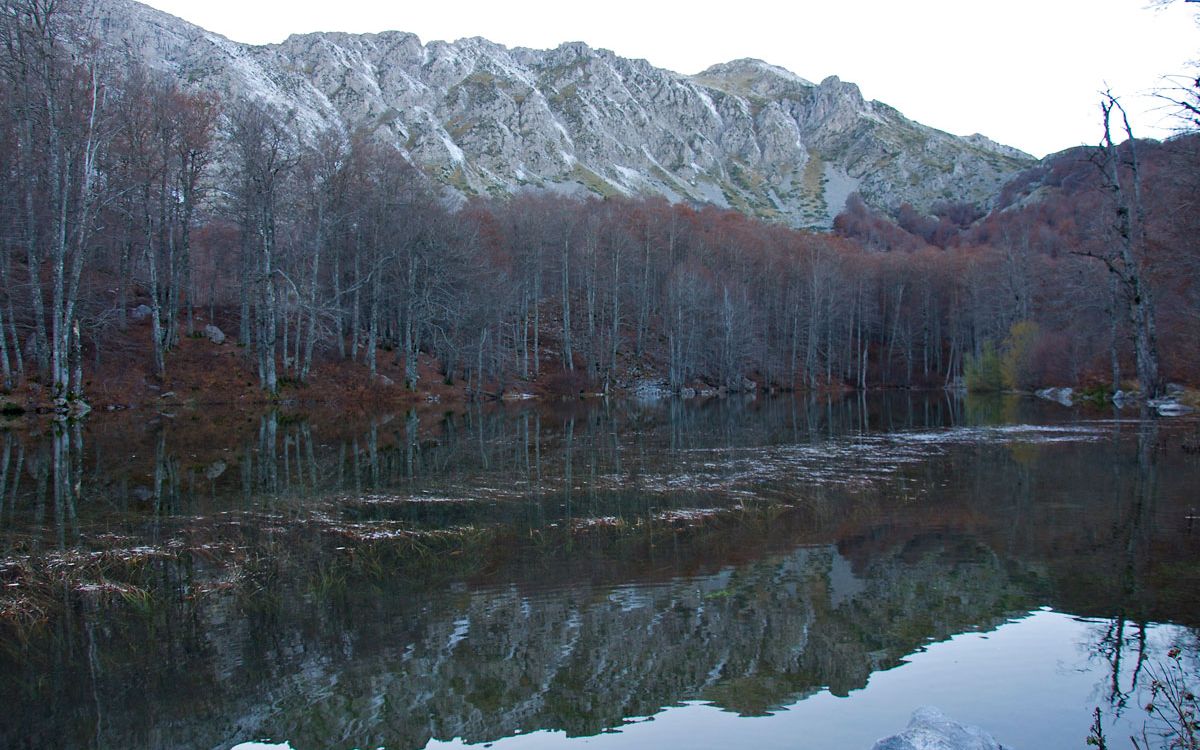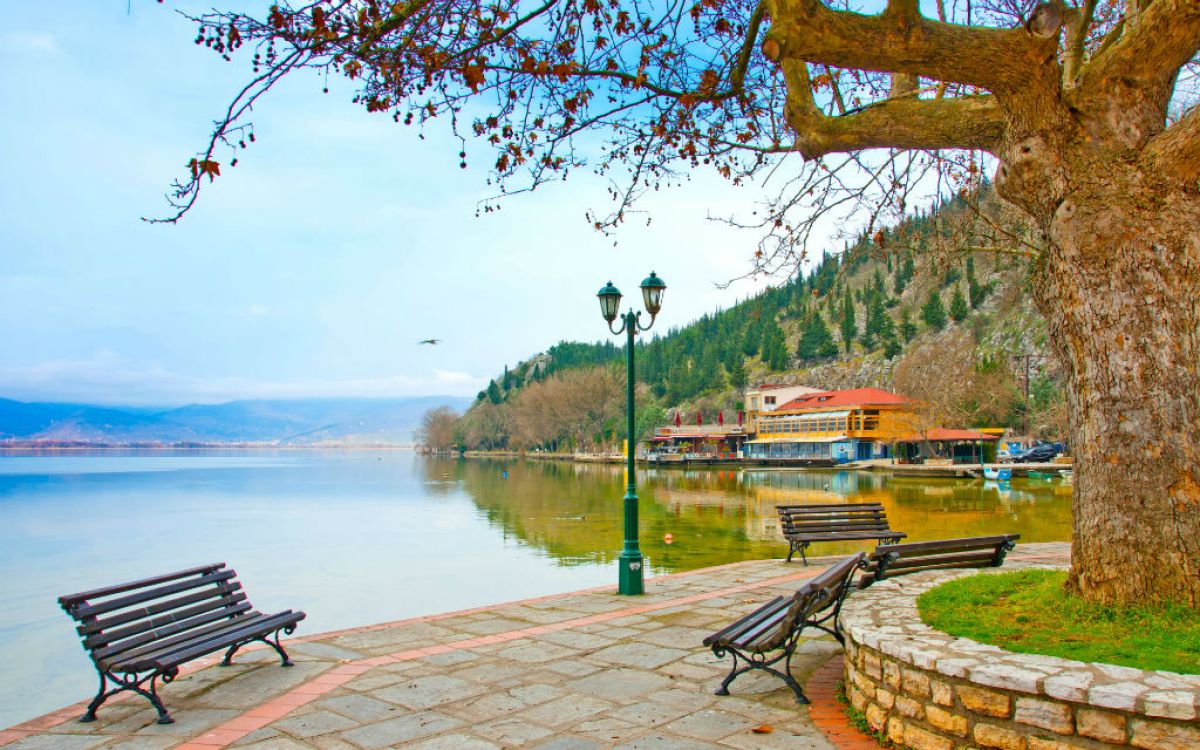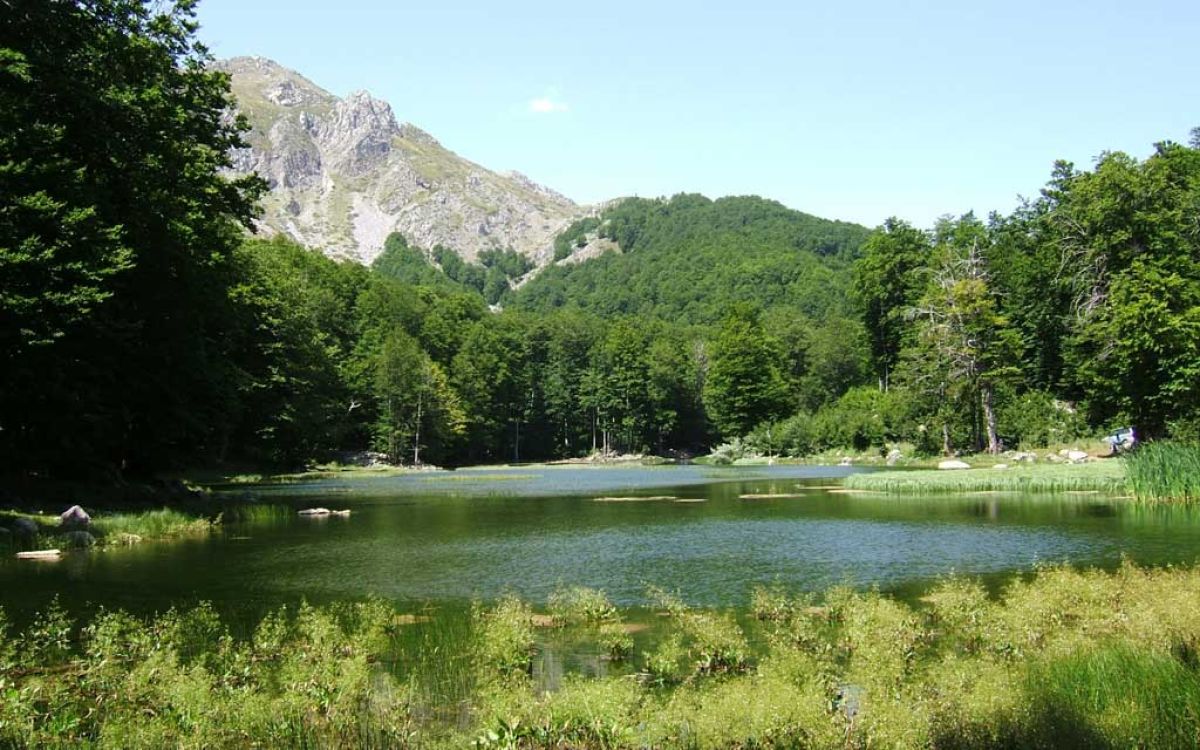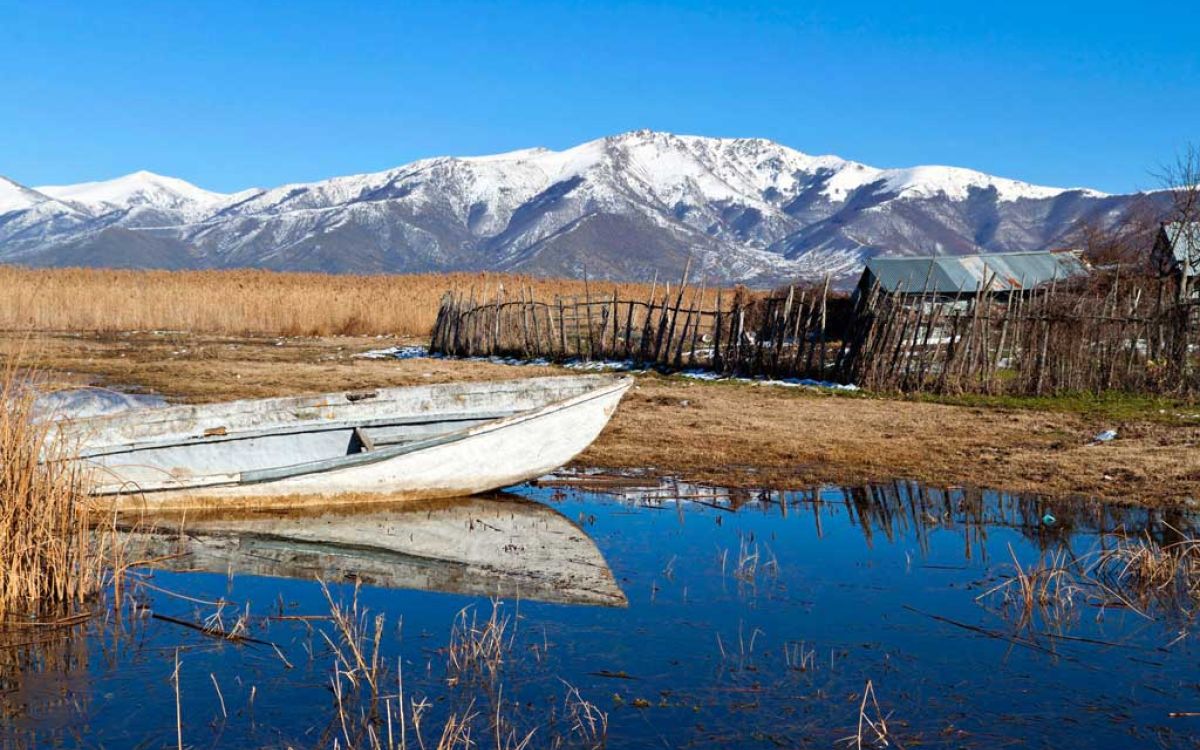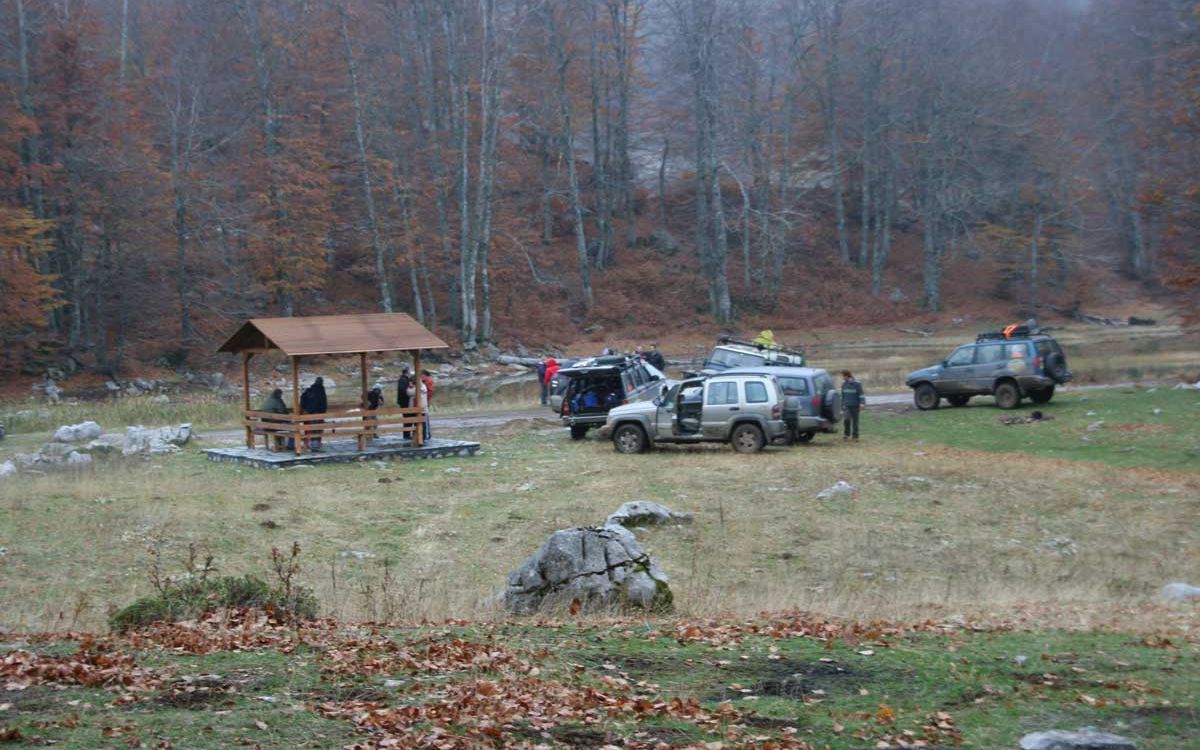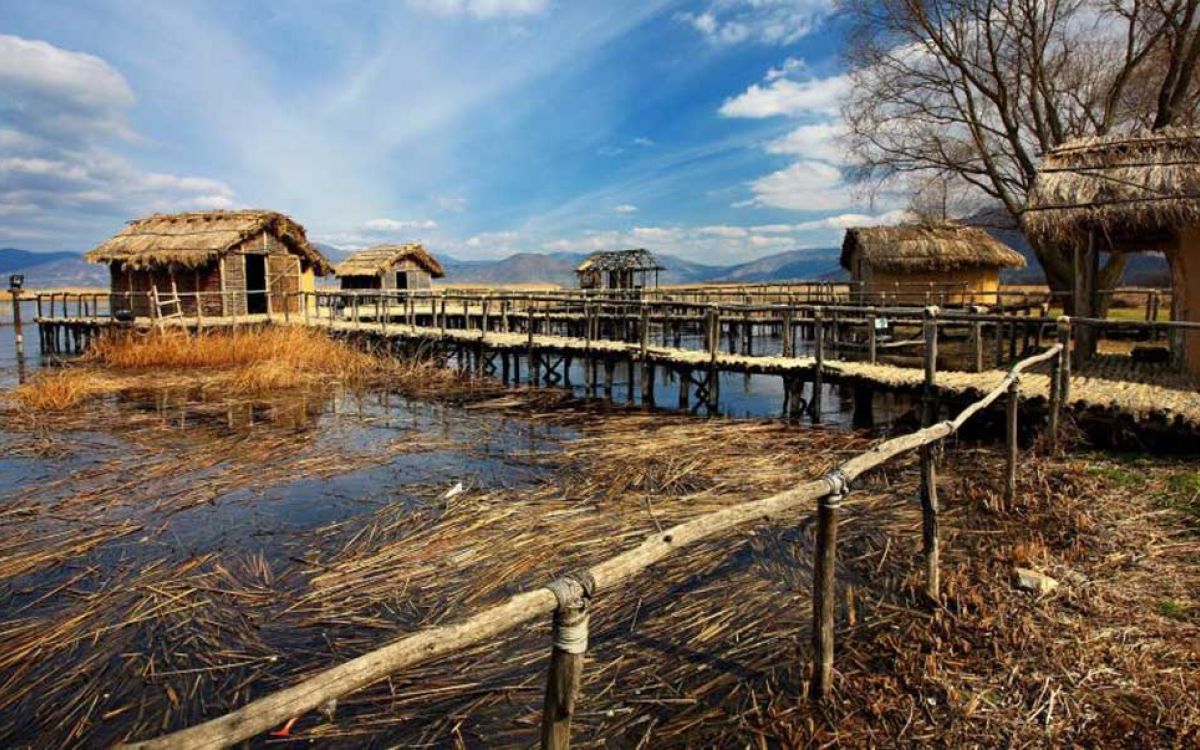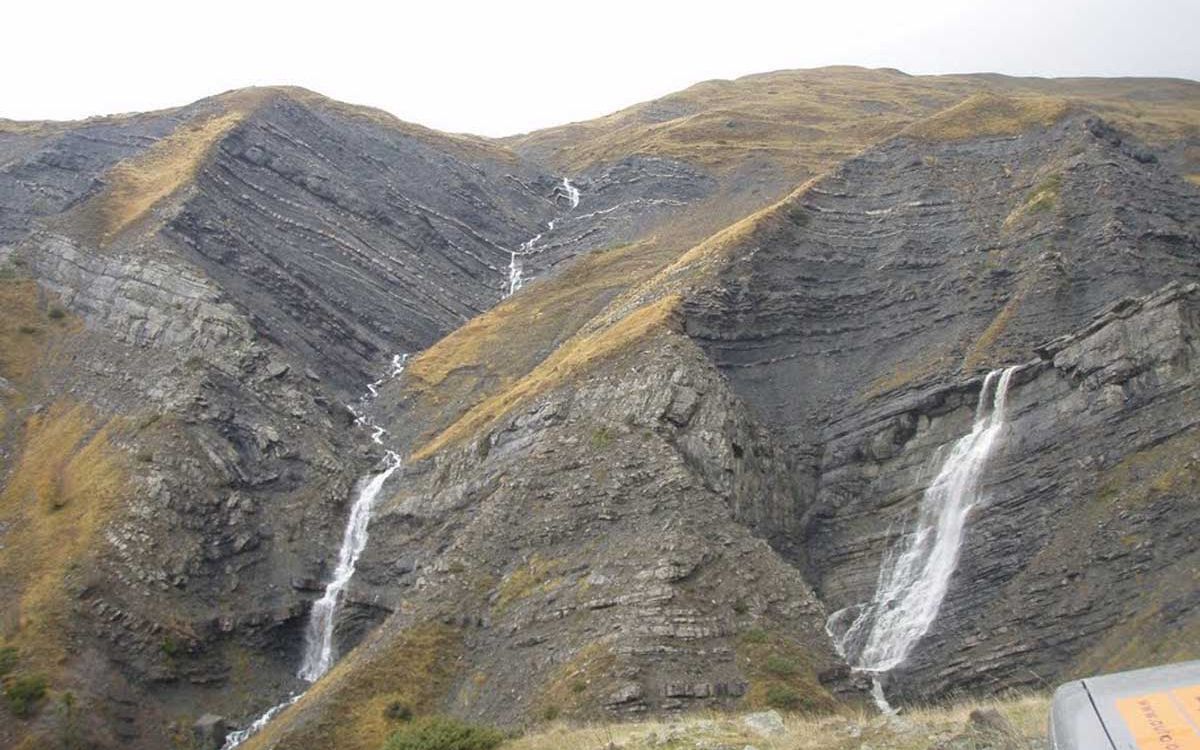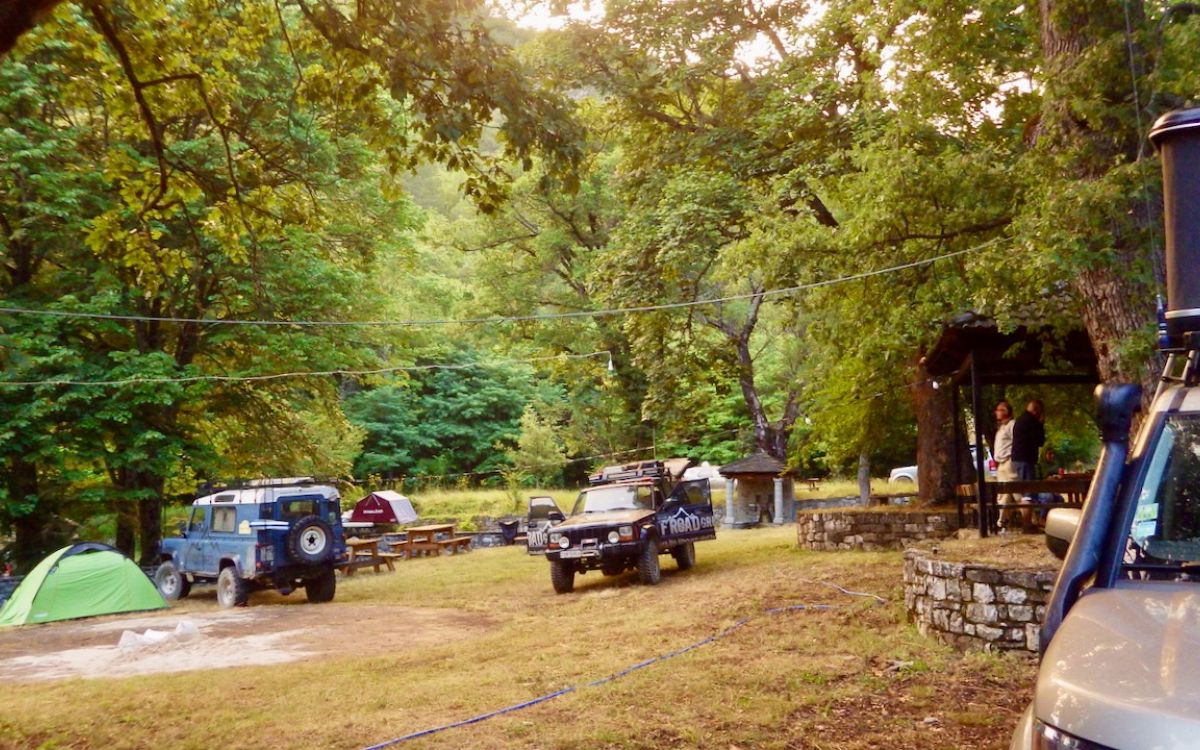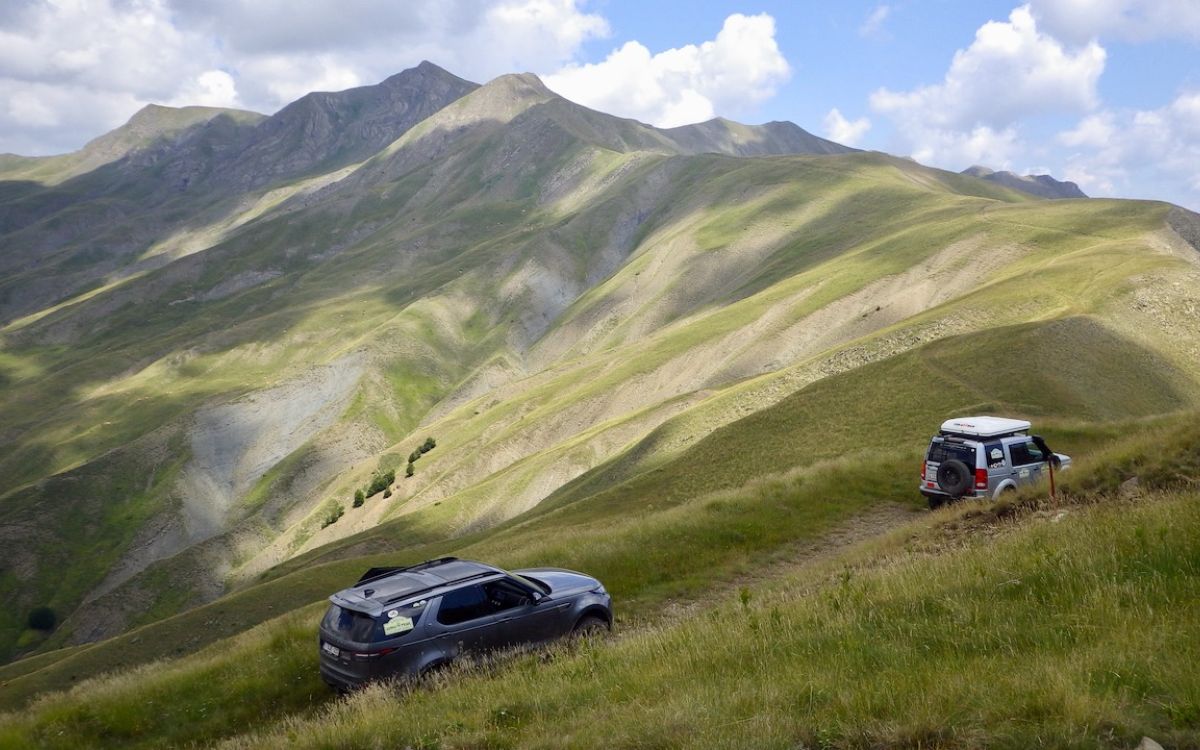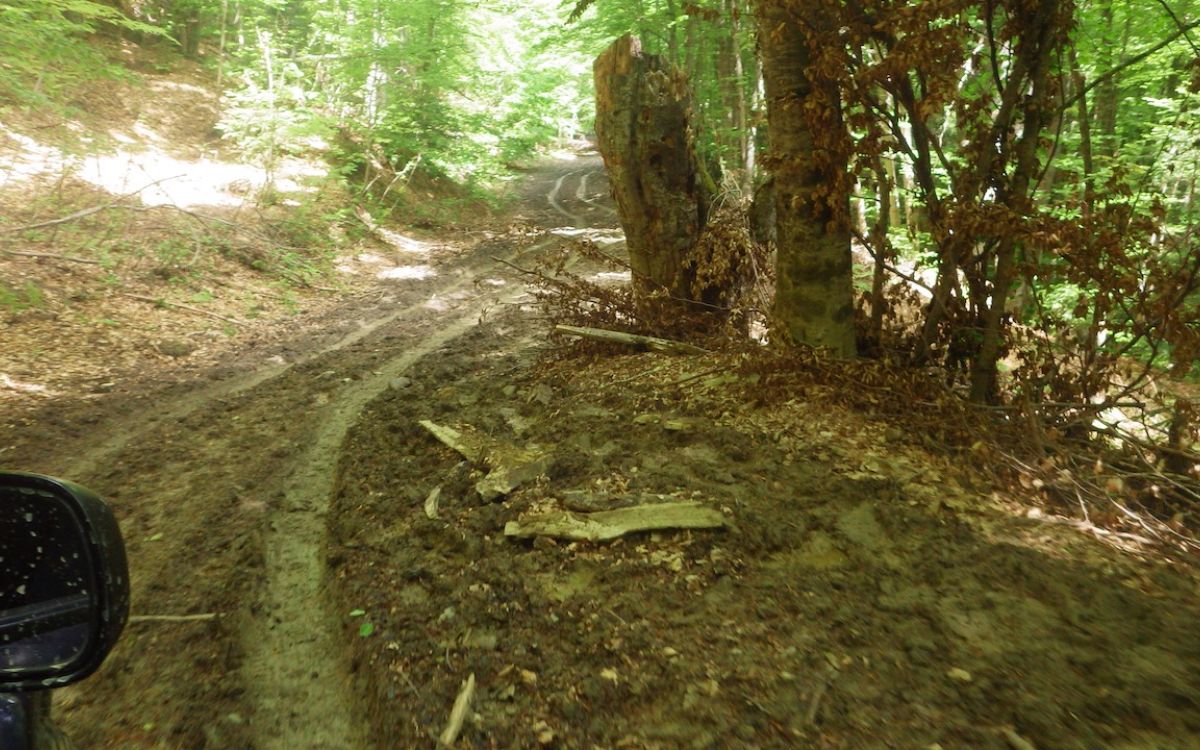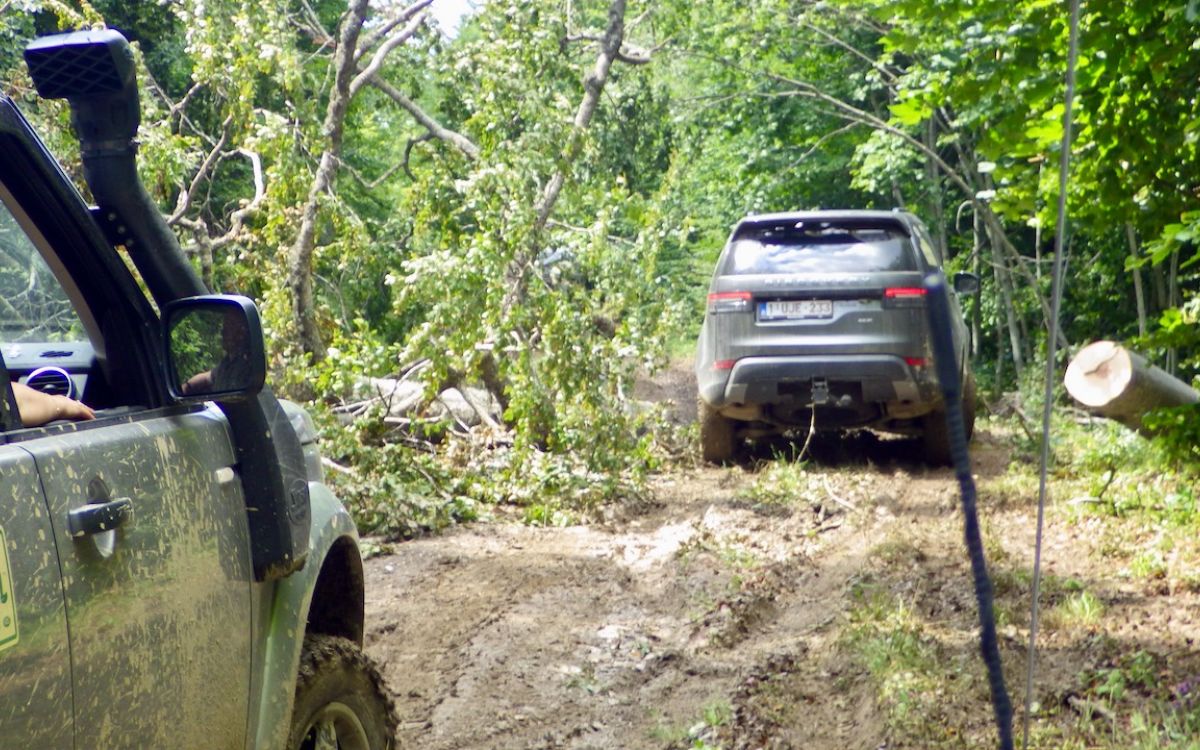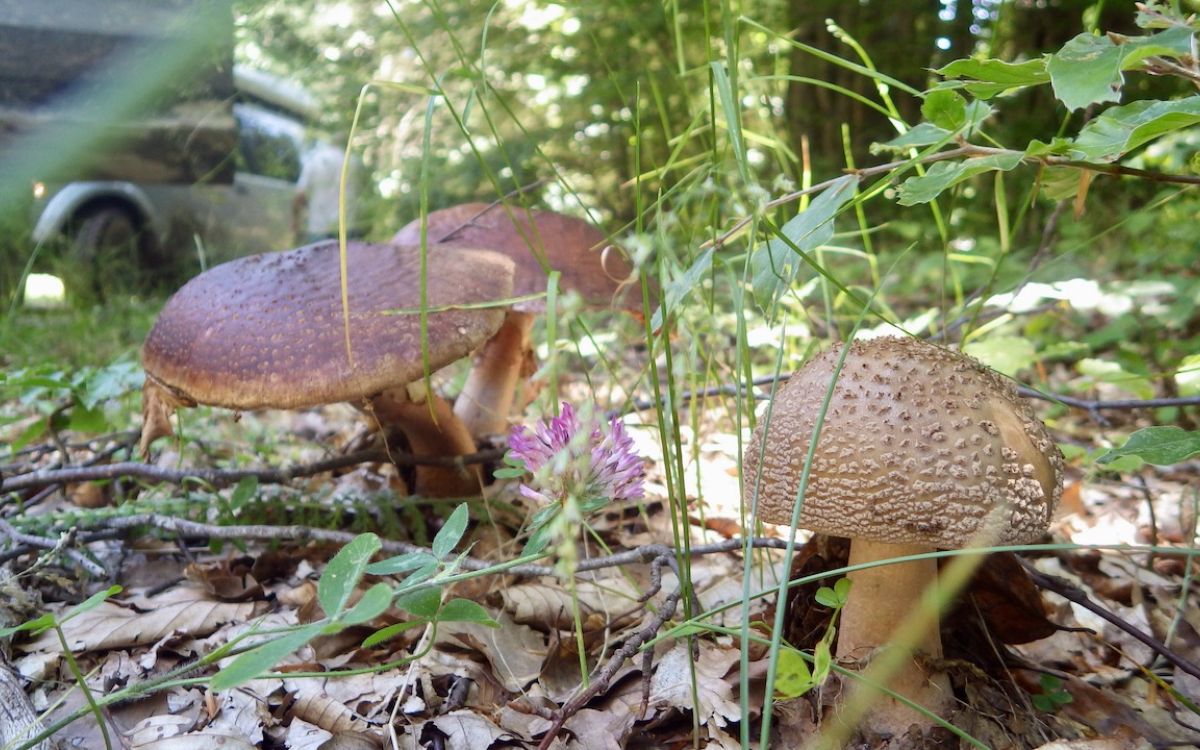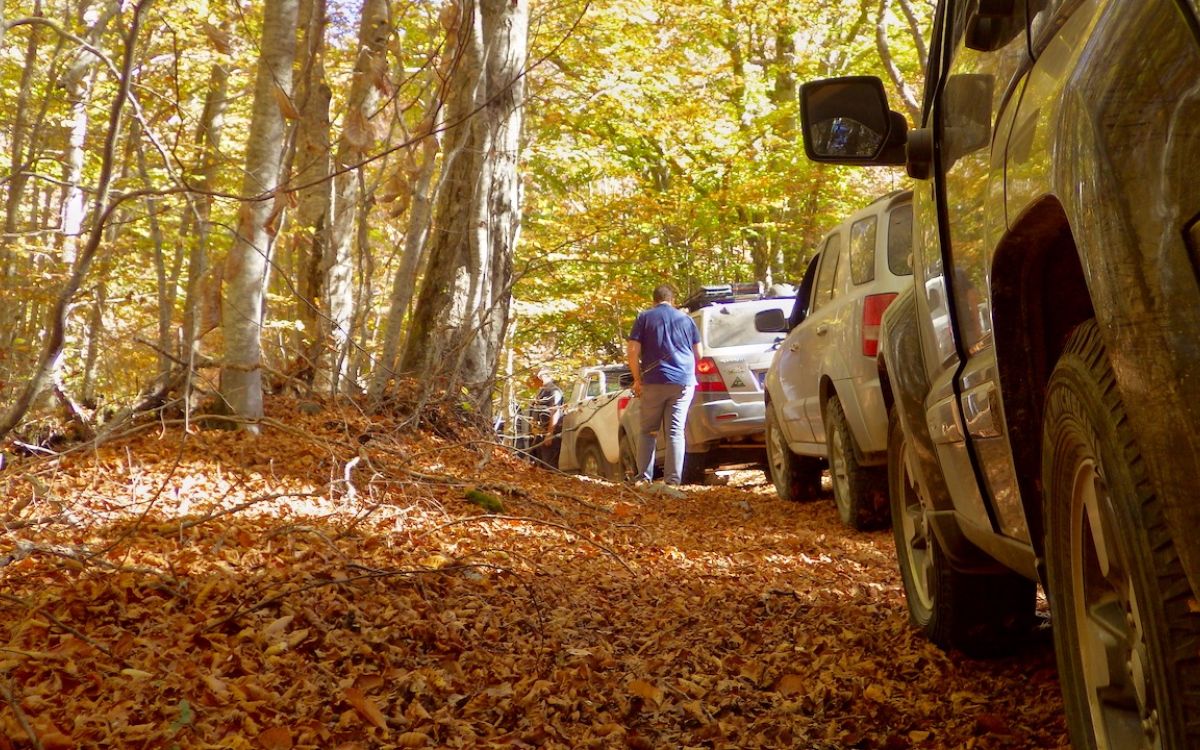The protected area of Makedonia
Kastoria
Prespes Lakes
Lake Orestiada
Prespes (Prespa) National Park
and the city of Kastoria
You’ll be inspired by the grand mansions and churches of Kastoria. Feel a sense of serenity in the mountainous region of Vitsi and take time to reflect at the lakes of Prespa.
The area has rich fauna as a result of the great variety of natural habitats and its topography. The lakes are important for the breeding of aquatic birds. In total more than 200 species have been observed at the lakes and the surrounding forest. Particularly notable are the colonies of Pelecanus crispus (wild pelicans) and of Pelecanus onocrotalus (red pelicans). The marine fauna of the lake is of importance due to the large rate of endemism. At the sub-species level, 80% of the fish are endemic. Finally, the area is rich in historic and religious monuments.
The National Park of Prespa encompasses the lakes of Mikri and Megali Prespa- in part-, which are separated by a sandy islet of alluvial sediment and are encompassed by tall mountains.
Our trip to Kastoria, Prespes and Nymfeo will reveal to you the countless beauties of Western Macedonia and its archeological treasures. Mountains, vast forests, rich fauna and flora, lakes, rivers, streams, great hiking trails make up the terrain of a landscape that impresses. This enchanting image complement samples of folk architecture, Byzantine and post-Byzantine monuments and archaeological sites of great historical value.
In the prefecture of Kastoria the beautiful homonymous lake, the great mansions and beauties of the Pindos mountain spine are dominant. The fur and woven crafts small industries are a prime activity of the local people as knowledge and passion passed on from generation to generation, creating objects that withstand time.
It is surprising to see fishing villages at an altitude of 850m. or encounter sea scapes a few miles away from a ski resort! Yet, this is the perfect combination of Florina. The two lakes, Small and Great Prespa, water border of Greece with Albania and the Former Yugoslav Republic of Macedonia (FYROM), Lake Vegoritida and lakes Petron, Cheimaditida, Zazari create a unique, gorgeous landscape.
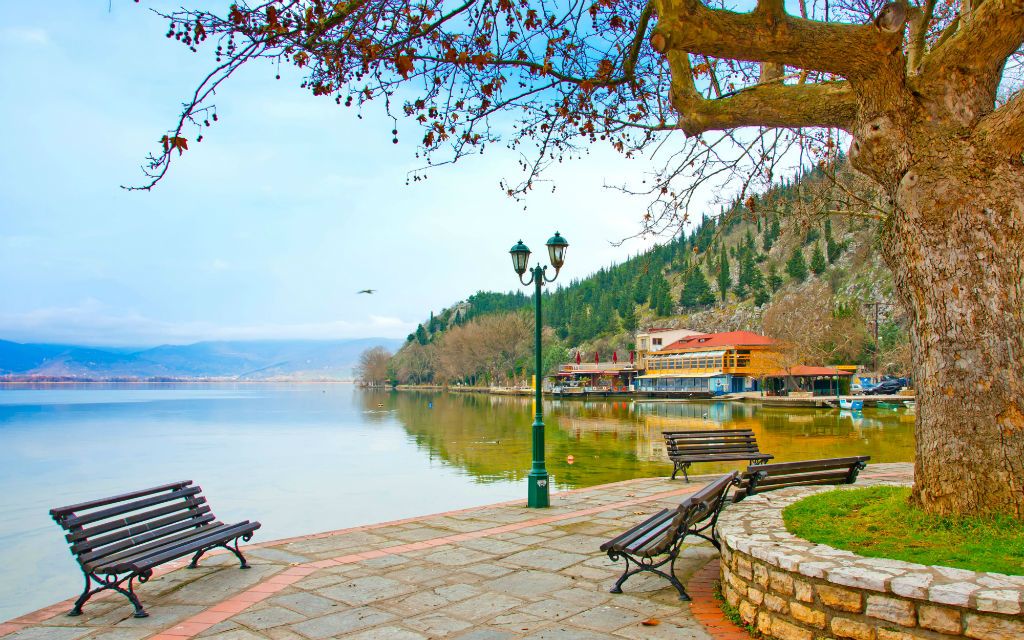
Kastoria - The Lakeside Jewel in northern Greece
From a distance it looks like an Impressionist painting; houses, churches, trees seen through a haze, their reflections shimmering in the lake. The Macedonian landscape is magnificent. Come closer and you see impressive aristocratic lakeside mansions surrounded by clusters of tall trees, interspersed by Byzantine churches. Come closer still, and you’ll see the locals sipping coffee or promenading by the lake, with the fishermen in their flat-bottomed boats offshore and pelicans keeping hopeful watch alongside.
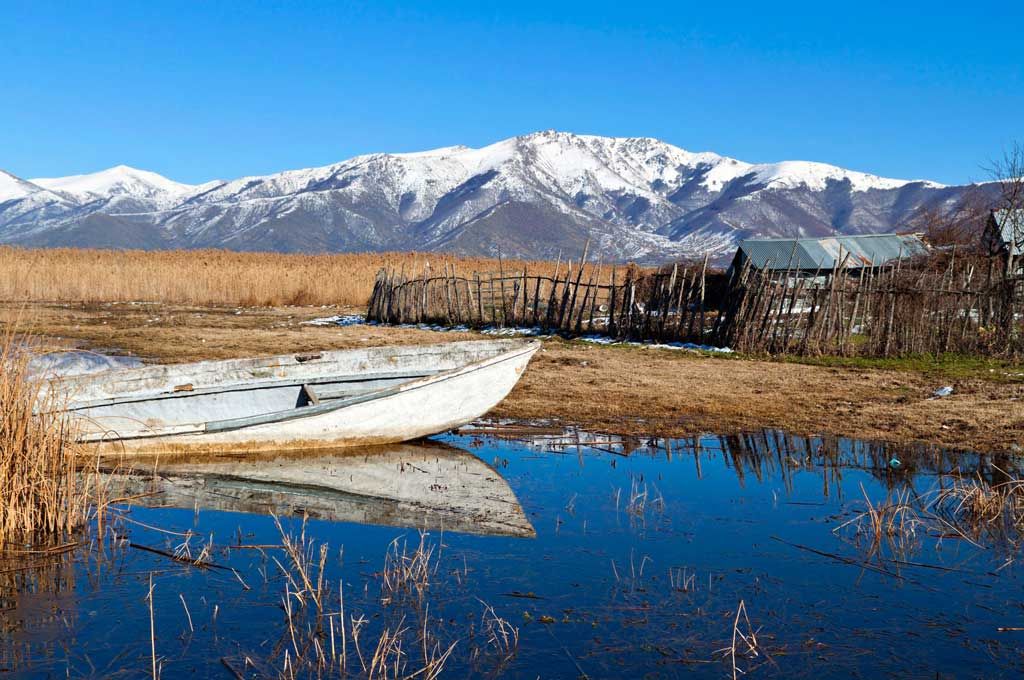
The Prespes Lakes
In Macedonia, there is an exquisite watercolour of migratory birds, ancient settlements and stories from the depths of time
The National Park: lakes, valleys and age-old cedars. The core of the National Park covers all of Mikri (Small) Prespa and a few lakeside areas, giving it a unique identity that was formalised in 1973 by the Ramsar Convention as an International Protected Wetland. The wetland of Mikri Prespa with its marshy valleys and reed beds constitutes the nucleus of the protected area. A second zone includes the ancient cedar forest near Mt Devas.
Hermitages and rock paintings of Prespes. From Psarades, the little village smack dab in the middle of Megali (Big) Prespa, you can set out in a small boat for a different kind of voyage. The natural beauty, along with its remote location, attracted many monks during the Ottoman occupation, who built their hermitages along the shores of the bigger lake. Today these small monastic structures, as well as the rock frescoes from the 14th to 16th century, are attractions that will give you an insight into another era. The boat is moored at a modest jetty at the base of the rock. Leap out and start exploring.
Two high-altitude lakes and three countries (Greece, Albania and Fyrom) that peacefully share their waters. Here in Northern Greece, there is an undefined borderline where no creature needs a passport, whether human, fish or fowl. The whole area around the lakes is called Prespa by residents of Greece, Albania and Fyrom. It’s a veritable ark of wildlife and culture.
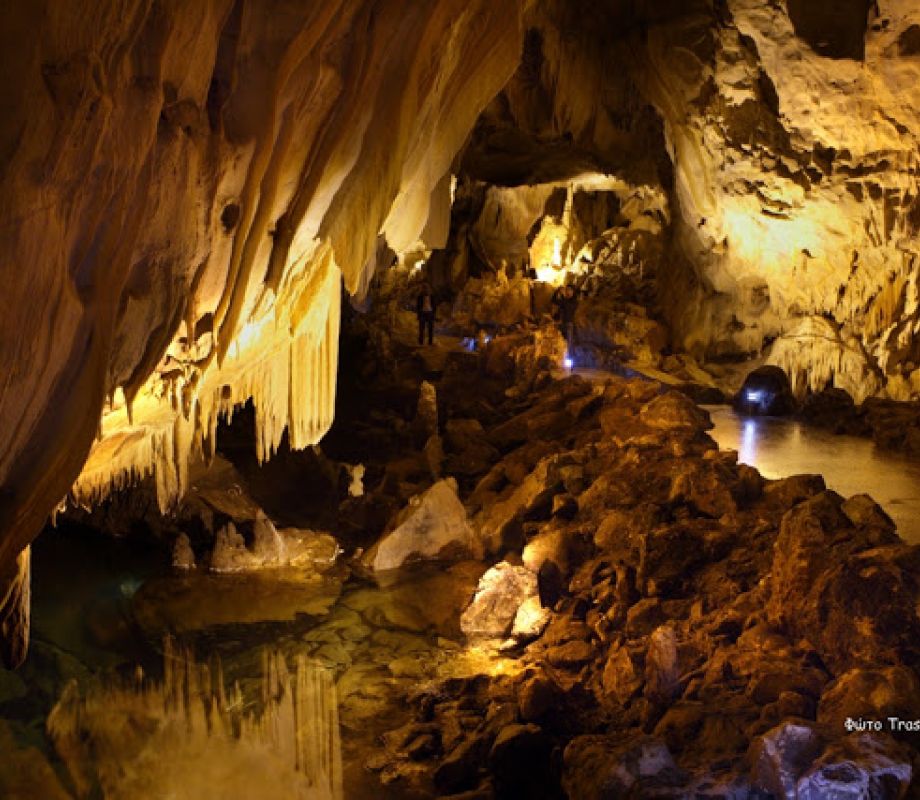
Cave of the Dragon
The inside of the cave is divided in large parts of land and water, both adorned with impressive decoration of stalactites. There are 7 underground lakes, 10 rooms and 5 corridor–tunnels in the cave.
Various paleontological remains have been found inside the cave of the Dragon, the majority of which, though, are cave bear bones (Ursus Speleaus). This species lived in Europe during the Pleistocene epoch and became extinct about 10,000 years ago. Its name derives from the fact that fossils of this species are mostly found in caves, indicating that this species spent more time in caves than the brown bear which used the caves only for hibernation. It is estimated that the average weight for males was 400–500 kilograms, while females weighed 200–250 kg. They were primarily a herbivorous animal and occasionally a carnivorous one.
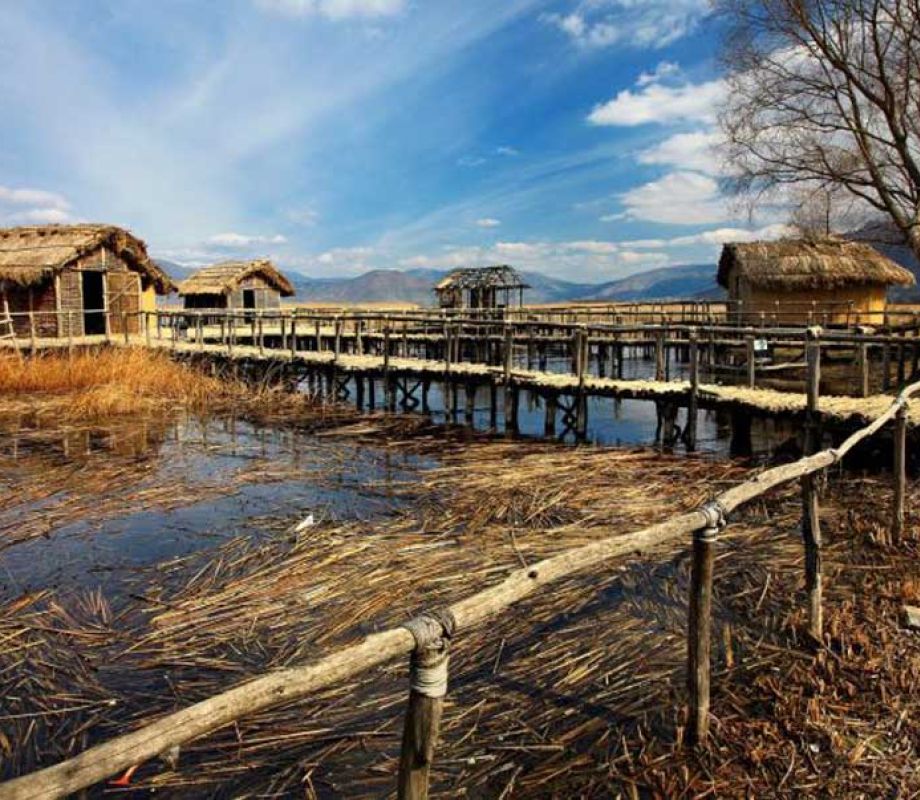
Dispilio on Lake Orestiada in Kastoria
Dispilio is an archaeological site containing remains of a Neolithic (5000 d.C.) lakeshore settlement that occupied an artificial island near the modern village of Dispilio. On Lake Orestiada in Kastoria have been built by the lake, all exact reconstructions of the huts of the prehistoric settlement.
The finds include tools (stone, bone, and flint) and quantities of animal bones, a discovery which shows that the inhabitants engaged in agriculture, hunting, and fishing; materials with which the huts were built (wooden piles and floors, post-holes); large clay storage jars; baskets woven in the manner of that period; cooking utensils (many of them boat-shaped); and bone and stone jewellery.
The most important find is a bone flute, the oldest musical instrument ever found in Europe. There is also a model in the exhibition area illustrating the form of the huts and how they were constructed.
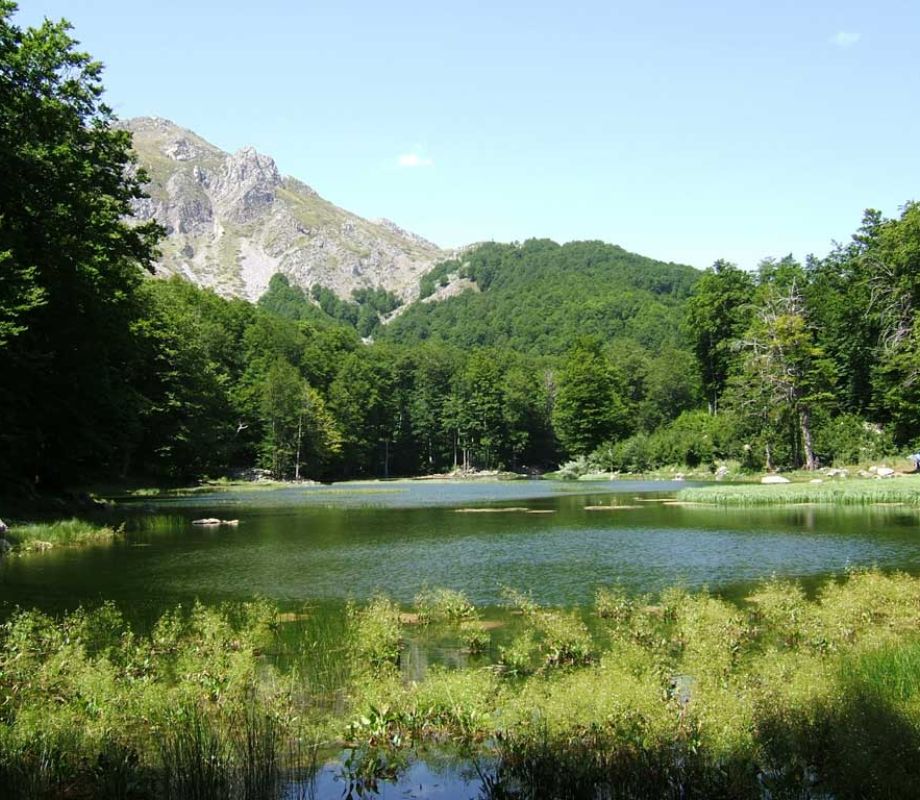
Arena mountain range
One of the best known and most discussed mountains in Greece is mount Grammos. It belongs to the “Natura 2000” network. To the west it borders to Albania, while to the East it reaches the Arena mountain range.
Forests and picturesque settlements of unique beauty accompany you to your journey. Gorges, rivers and lakes which constitute rare water lands, remain in this part of Greece a hospitable habitat for many endangered avifauna and fauna species.
Arenes, an impressive cluster of mountain peaks, separated to upper and lower Arena, with the highet paek reaching 2192m.
In this region the dreamlike plateau “Trakosara” is situated, which took its name from a spring. Its water according to the locals “weighs three houndred dreams”.
Here you will also enjoy the alpine Lake Moutsalia with its water- lilies and its freezing waters, that look like grey-green granite and host a rare amphibian, the Alpine Triton, a “small fish with legs”, as the locals describe it.



